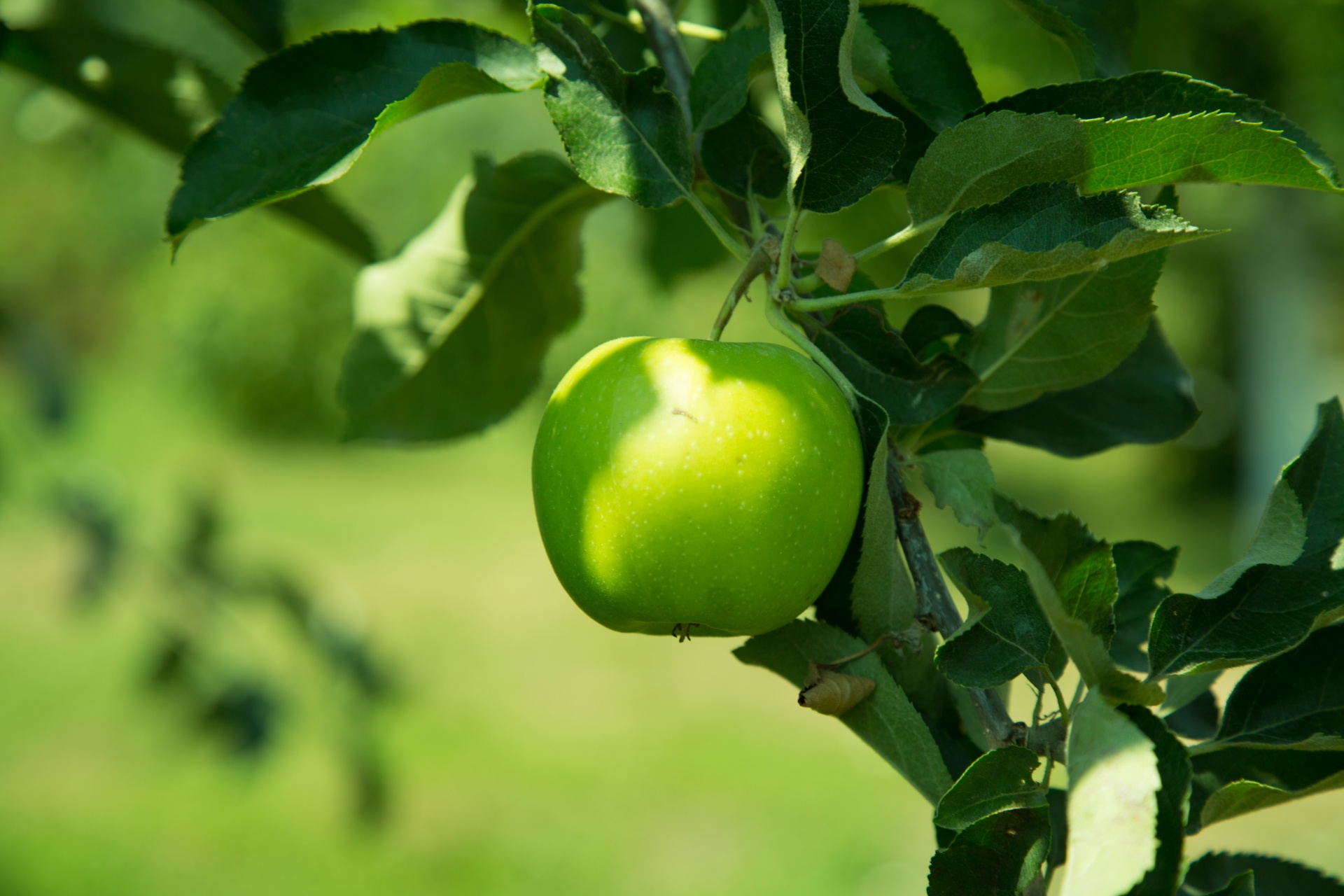
Green Apple Tree
Malus domestica
Basic Information
🌿 Family: Rosaceae🗺️ Zone: 4-8
Other Names:
- Malus pumila
- Malus sieversii
🌡️ Ideal Temperature : 60°F°F – 75°F°F
🔥 Heat Tolerance: Up to 90°F°F
❄️ Cold Tolerance: Down to -30°F°F
🌱 Type: Perennial
Layers
- Canopy
Functions
- Edible
- Medicinal
- Wildlife Attractor
- Pollinator
- Windbreaker
- Border Plant
Pests
Description
The Green Apple Tree is a deciduous tree renowned for its tart, crisp green fruits. Typically reaching a height of 4.5–6 meters (15–20 feet) with a similar spread, it forms a rounded canopy. In spring, the tree produces fragrant white to pink blossoms, which are pollinated by bees and other insects. It thrives in well-drained loamy soils with a pH between 6.0 and 7.0.
🌞💧 Sun and Water Requirements:
Green Apple Trees require full sun, receiving at least 6–8 hours of direct sunlight daily. They prefer consistent moisture but are sensitive to waterlogged conditions. Regular watering is essential, especially during dry periods, to maintain soil moisture without oversaturation.
✂️🫘 Methods to Propagate:
Propagation is commonly achieved through grafting to ensure the desired fruit characteristics. This involves joining a scion from a preferred variety onto a compatible rootstock. Seed propagation is possible but often results in unpredictable fruit quality and tree characteristics.
🧑🌾👩🌾 When to Harvest:
Harvesting typically occurs in late summer to early fall, depending on the specific variety and local climate. Apples are ready to pick when they have developed full coloration and detach easily from the branch with a gentle twist.
Purpose
- Edible: Green apples are consumed fresh, cooked, or processed into products like cider, juice, and preserves. They are rich in dietary fiber, vitamins, and antioxidants.
- Medicinal: Apples have been associated with various health benefits, including improved digestion and reduced risk of certain chronic diseases due to their nutrient content.
- Wildlife Attractor: The tree provides habitat and food for various bird species and pollinators, enhancing local biodiversity.
- Pollinator: The blossoms attract bees and other pollinating insects, supporting the pollination needs of nearby plants.
- Windbreaker: When planted in rows, apple trees can serve as effective windbreaks, reducing wind speed and protecting other plants.
- Border Plant: Their structured form and seasonal interest make them suitable for marking property lines or creating visual boundaries in landscapes.